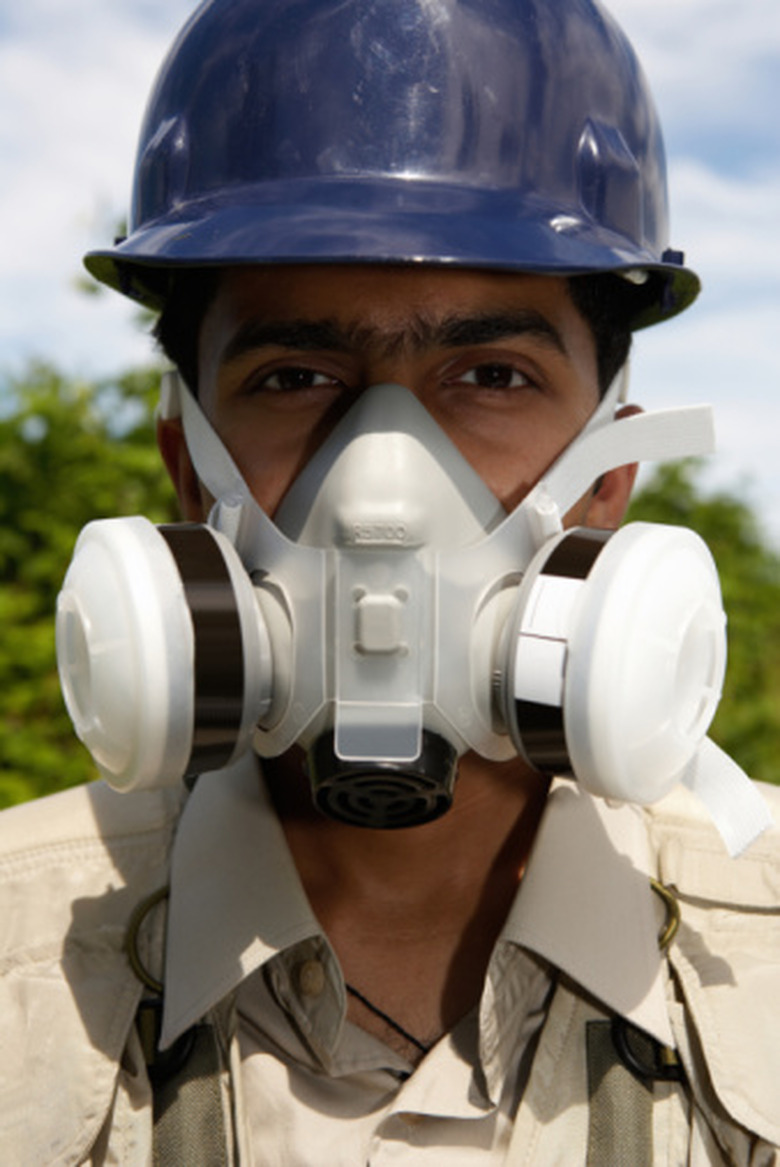How To Convert Mg/m3 To Ppm
Exposure limits for chemical vapors in air are normally given in units of either milligrams per cubic meter (mg/m3) or parts per million (ppm). Units of mg/m3 describe the maximum mass of chemical which can be present in 1 cubic meter of air. Parts per million refers to the volume units of gas (milliliters, for example) per 1 million of the same units of air. You can convert from mg/m3 to ppm by first calculating the gram molecular weight of the chemical.
Step 1
Examine the molecular formula for the chemical for which you are calculating concentration. You can normally find this on the manufacturer's safety data sheet for the chemical. This formula shows the types of elements in each molecule of the chemical, along with the quantity of atoms of each element. For example, the chemical might be acetone, which has the chemical formula CH3COCH3. An acetone molecule has three carbon (C) atoms, six hydrogens (H) and one oxygen (O).
Step 2
Find the atomic weight for each element on the periodic table. Multiply the atomic weight of each element by the number of atoms of that element per molecule, then add the products of those calculations. The result is the gram molecular weight of the chemical. This is the weight of one mole of the chemical, where a mole is a standard quantity of molecules, 6.02 x 10^23. In the case of acetone, the gram molecular weight is (3)(12.01)+(6)(1.01)+(1)(16) = 58.09 grams per mole.
Step 3
Enter the concentration value, in units of mg/m3, into the calculator. For example, if the concentration value is 35 mg/m3, enter 35.
Step 4
Multiply the value you just entered by 24.45. This is a conversion factor that represents the volume (in liters) of one mole of gas. In the case of the example, the calculation would be (35)(24.45) = 855.75.
Step 5
Divide the value of the last calculation by the gram molecular weight that you earlier calculated for your chemical. The result of this final calculation is the concentration in air of that chemical in units of parts per million (ppm). For acetone, the calculation would be 855.75/58.09 = 14.7 ppm.
Things Needed
- Periodic table
- Calculator
TL;DR (Too Long; Didn't Read)
This calculation is valid for a temperature of 25 degrees Celsius (approximately room temperature) and a pressure of one atmosphere.
Cite This Article
MLA
Judge, Michael. "How To Convert Mg/m3 To Ppm" sciencing.com, https://www.sciencing.com/convert-mgm3-ppm-8545242/. 24 April 2017.
APA
Judge, Michael. (2017, April 24). How To Convert Mg/m3 To Ppm. sciencing.com. Retrieved from https://www.sciencing.com/convert-mgm3-ppm-8545242/
Chicago
Judge, Michael. How To Convert Mg/m3 To Ppm last modified August 30, 2022. https://www.sciencing.com/convert-mgm3-ppm-8545242/
